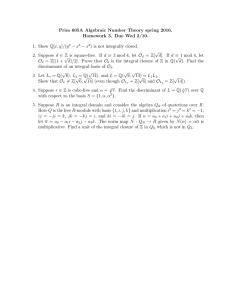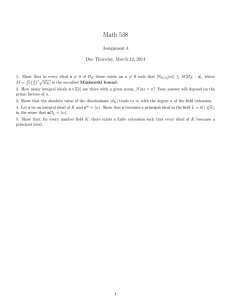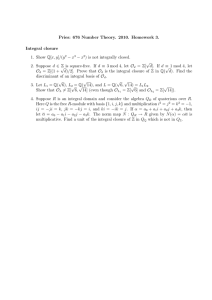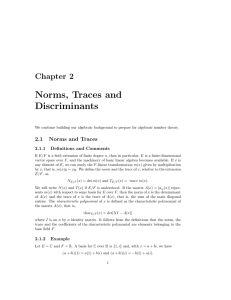Pries: 676 Number Theory. 2010. Homework 4. Discriminant and Integral Basis
advertisement
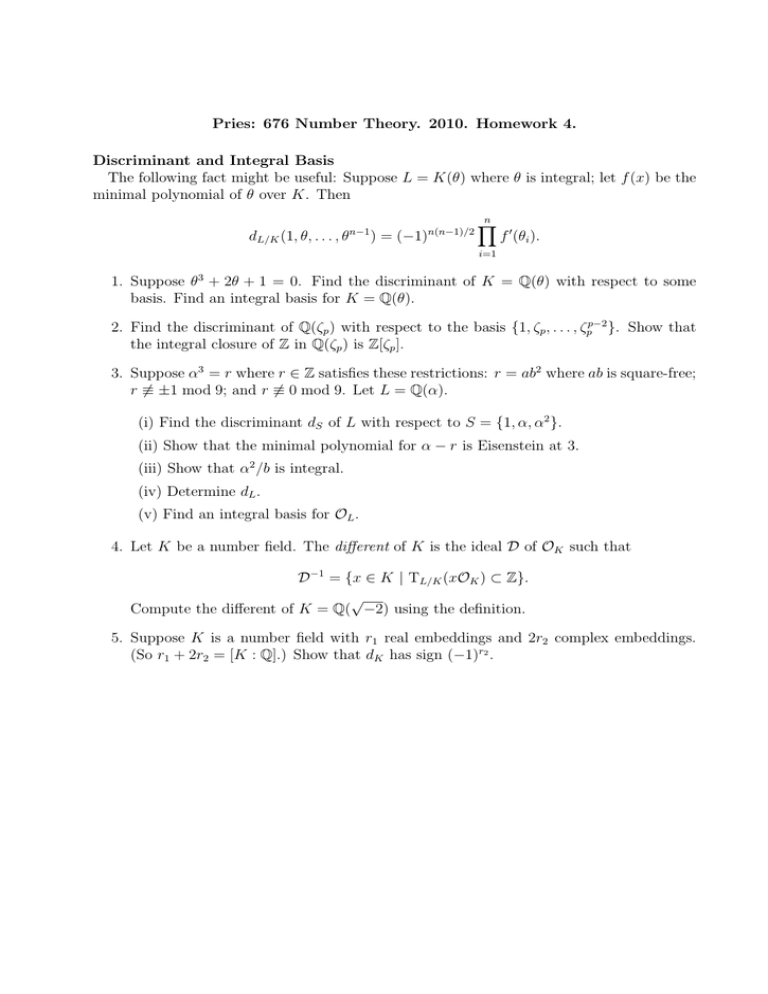
Pries: 676 Number Theory. 2010. Homework 4.
Discriminant and Integral Basis
The following fact might be useful: Suppose L = K(θ) where θ is integral; let f (x) be the
minimal polynomial of θ over K. Then
dL/K (1, θ, . . . , θn−1 ) = (−1)n(n−1)/2
n
Y
f 0 (θi ).
i=1
1. Suppose θ3 + 2θ + 1 = 0. Find the discriminant of K = Q(θ) with respect to some
basis. Find an integral basis for K = Q(θ).
2. Find the discriminant of Q(ζp ) with respect to the basis {1, ζp , . . . , ζpp−2 }. Show that
the integral closure of Z in Q(ζp ) is Z[ζp ].
3. Suppose α3 = r where r ∈ Z satisfies these restrictions: r = ab2 where ab is square-free;
r 6≡ ±1 mod 9; and r 6≡ 0 mod 9. Let L = Q(α).
(i) Find the discriminant dS of L with respect to S = {1, α, α2 }.
(ii) Show that the minimal polynomial for α − r is Eisenstein at 3.
(iii) Show that α2 /b is integral.
(iv) Determine dL .
(v) Find an integral basis for OL .
4. Let K be a number field. The different of K is the ideal D of OK such that
D−1 = {x ∈ K | TL/K (xOK ) ⊂ Z}.
√
Compute the different of K = Q( −2) using the definition.
5. Suppose K is a number field with r1 real embeddings and 2r2 complex embeddings.
(So r1 + 2r2 = [K : Q].) Show that dK has sign (−1)r2 .
